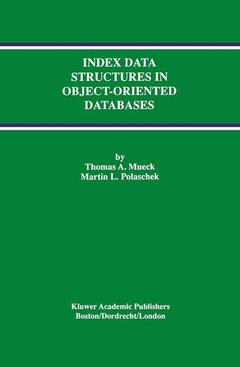Description
Index Data Structures in Object-Oriented Databases, Softcover reprint of the original 1st ed. 1997
Advances in Database Systems Series, Vol. 7
Authors: Mueck Thomas A., Polaschek Martin L.
Language: English
Subjects for Index Data Structures in Object-Oriented Databases:
Approximative price 158.24 €
In Print (Delivery period: 15 days).
Add to cart
Publication date: 10-2012
177 p. · 15.5x23.5 cm · Paperback
177 p. · 15.5x23.5 cm · Paperback
Description
/li>Contents
/li>Comment
/li>
Object-oriented database management systems (OODBMS) are used to imple ment and maintain large object databases on persistent storage. Regardless whether the underlying database model follows the object-oriented, the rela tional or the object-relational paradigm, a key feature of any DBMS product is content based access to data sets. On the one hand this feature provides user-friendly query interfaces based on predicates to describe the desired data. On the other hand it poses challenging questions regarding DBMS design and implementation as well as the application development process on top of the DBMS. The reason for the latter is that the actual query performance depends on a technically meaningful use of access support mechanisms. In particular, if chosen and applied properly, such a mechanism speeds up the execution of predicate based queries. In the object-oriented world, such queries may involve arbitrarily complex terms referring to inheritance hierarchies and aggregation paths. These features are attractive at the application level, however, they increase the complexity of appropriate access support mechanisms which are known to be technically non-trivial in the relational world.
Preface. 1. Introduction. 2. Database Model. 3. Data Structures and Indexing. 4. Type Hierarchy Indexing. 5. Aggregation Path Indexing. 6. Collection Operations. 7. Performance Analysis - An Example. References. Index.
The purpose of this book is to provide technical information about current and future issues of search data structures used to index large object-oriented databases. The intended audience includes practitioners as well as researchers and students interested in the technical issues of object-oriented databases. The only prerequisite for understanding the material presented in this book is a working knowledge of object-oriented modelling and programming concepts and a minimum knowledge of algebraic concepts like, for example, sets.
© 2024 LAVOISIER S.A.S.
These books may interest you

Applications of Logic Databases 158.24 €



